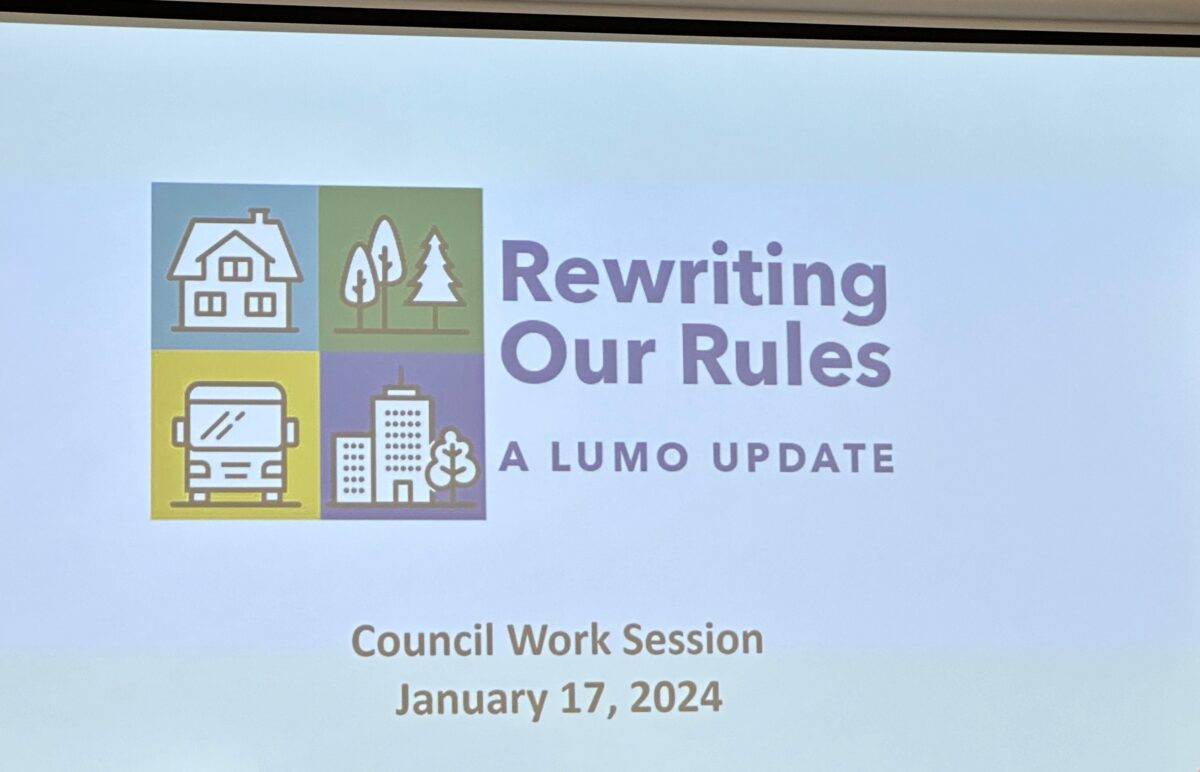On Wednesday, January 17, 2024, the new Chapel Hill Town Council held its first meeting of 2024, and one thing is clear—the update to the Land Use Management Ordinance is going to be a hot topic this year.
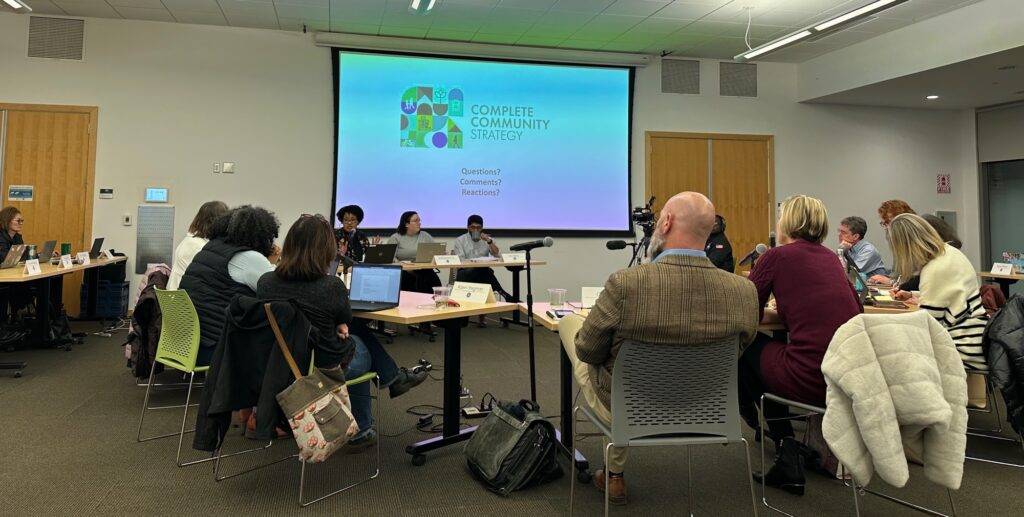
The LUMO is the set of ordinances that establish how land can be used in the town. It includes rules about how tall a building can be, how far it needs to be set back from the property line on the front, rear, and back of the lot, how the land can be used, what kind of stormwater facilities need to be built, and so forth. The current LUMO is a poorly organized, complex, and confusing document that largely supports suburban-style auto-oriented development, and does not support the town’s goals to create a sustainable, connected, and, yes, complete community.
A principal goal of the LUMO Rewrite, which the town first identified as a priority in 2017, is to incorporate the updated policies from the last few years, such as the 2020 update to the Future Land Use Map, the Complete Communities work, and the effort to build the North-South Bus Rapid Transit system into an updated set of regulations that better meet the Town’s needs.
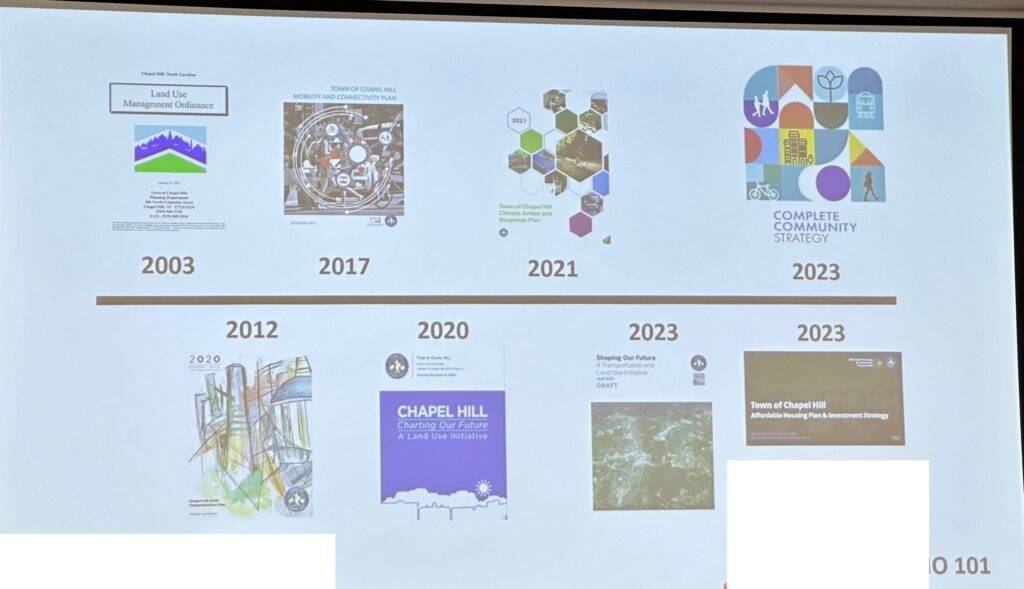
And that was the main topic of discussion at the meeting, the first chaired by new Mayor Jess Anderson. Here are five key takeaways:
1. Full Steam Ahead on the LUMO Rewrite
A consultant has been working on the project for more than a year already, and they’re moving forward quickly. The plan calls for extensive public engagement throughout the winter and spring, leading up to a draft in the summer, additional public engagement (with any needed changes) in the fall, and adoption in November. It’s an aggressive schedule, but staff is confident they can make it happen, and council is on board.
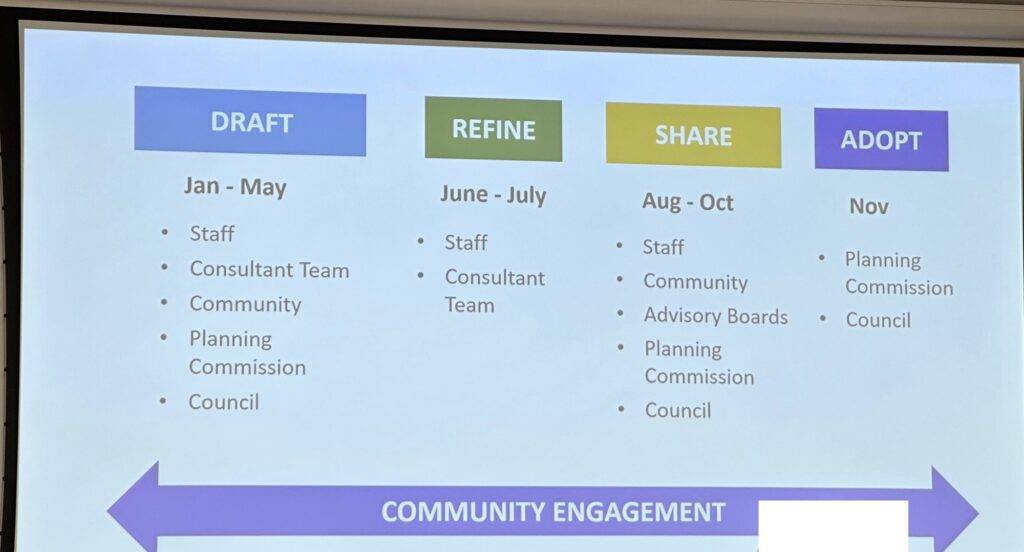
2. Complete Communities is the “North Star” for the LUMO update (and other town activities)
The Council adopted the Complete Community strategy in December 2022, and it’s playing a big role in guiding the LUMO update as well as being integrated throughout town operations. The Town’s planning director, Britany Waddell, noted its key concepts are guiding development reviews and are being spread throughout the organization to make sure all town departments are working towards the same goal. Council member Karen Stegman noted that historically the town’s different departments had been siloed from one another, and was pleased to hear that the Complete Community plan was being used to reverse this pattern. Likewise, new council member Melissa McCullough noted that projects can often have “co-benefits” in that while they may primarily be intended to address one issue, they may benefit other departments, and expressed her hope that these co-benefits were being highlighted to town staff.
3. Providing more types of housing choices continues to be a high priority for the Council
Back in June, after a furious half year of public controversy, Town Council adopted significant updates to the LUMO that allowed landowners to build duplex (two-family) homes in most of the town’s residential zoning districts. The original proposal would have allowed landowners to build triplexes (three-family) or fourplexes (four-family) homes in most of the districts, but the final proposal only allowed those in districts that generally allow even more dense apartment buildings.
But there are a lot of places where it may make sense to allow property owners to build higher-density housing options like triplexes, cottage homes, or small apartment buildings. This may include areas on or near major transit corridors or areas with good connectivity, such as MLK Jr. Blvd., or Weaver Dairy Road. And in the future, as the town’s Everywhere to Everywhere greenway network comes to fruition, these key greenway trails may be ideal locations for more gentle density.
Staff asked council members whether they supported this approach, and there was enthusiastic agreement from almost all of the council members. Staff explained that the new LUMO could be developed to allow these additional hosing types along existing transportation corridors. Later, as the greenway network is solidified, the regulations could be extended to allow these additional housing types on properties with good greenway access.
Council member Theodore Nollert and Paris Miller-Foushee expressed their support, with Nollert in favor of providing more housing choices generally, and Miller-Foushee reflecting on the legacy of single-family zoning in perpetuating racial and class segregation. Council member Karen Stegman pointed out that while the housing choices proposal did not impact areas zoned as Neighborhood Conservation Districts, where special regulations apply, the new LUMO should allow more housing choices in neighborhoods that are well connected to public transit and greenways. Council members Camille Berry and McCullough also expressed support for this strategic approach to expanding housing options.
(As an aside, council member Stegman said a developer had told her that despite the housing options changes, it was still too difficult to build “missing middle” housing in Chapel Hill. Staff noted that they are reviewing the standards in the existing LUMO that may be making it too difficult to build this housing and evaluating how to address these barriers.)
4. More changes to support housing affordability are coming
The meeting closed with staff taking the temperature on two additional proposed changes to the LUMO. One would be an update to the town’s minor subdivision regulations, which come into play for small divisions of property, such as splitting one oversized lot into two. Currently, the regulations require the landowner to build a sidewalk. Staff is proposing that if it really makes no sense to build a sidewalk—for example, if there is no sidewalk on the street and along the next couple of blocks—perhaps these small subdivisions should be exempted from the sidewalk requirement. Council members generally agreed that these types of contextual regulations would make sense.
Second, staff proposed allowing more types of what are called “flag” lots. Flag lots are lots that are not up against the street, and are connected to the street through a driveway on a long, narrow flag. See some examples below.

Carrboro has a lot of flag lots. A benefit is that they allow land to be used more efficiently and, as council member Berry pointed out, because they do not have street frontage, they are often more affordable. All of the council members supported this proposal.
5. Council will be asked to address additional LUMO policies this fall.
Staff will be back three more times in the spring to discuss key LUMO policy issues. The tentative schedule, included in the slide below, includes a discussion of what kinds of uses should be allowed in town, and where (you can’t have a walkable community if there’s nowhere nearby to walk to); a discussion of the types of design standards in the new LUMO; and how the LUMO’s procedures can be updated to better support the council’s twin goals of equity and an efficient development process.
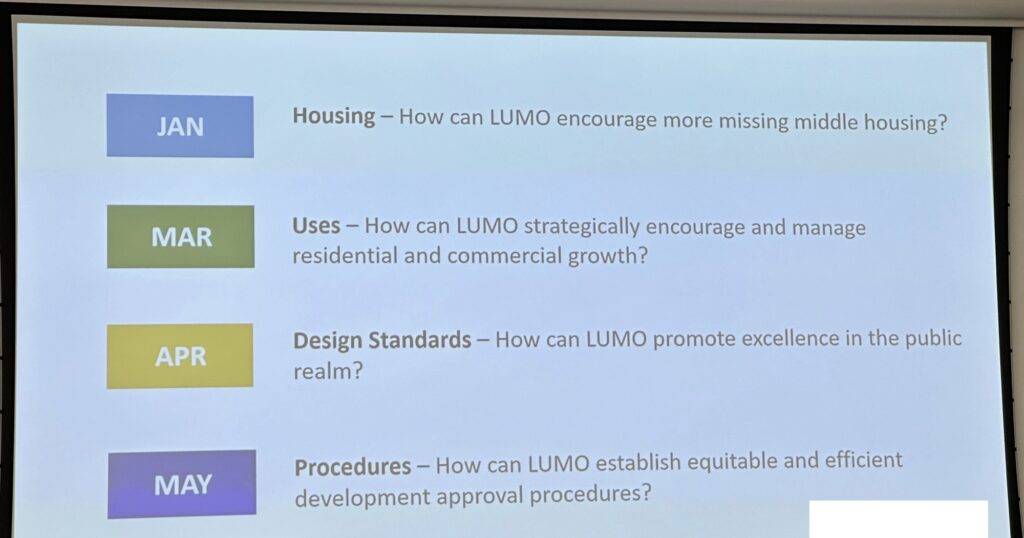
The key takeaway from this meeting is that Mayor Anderson and council are focused on implementing the Complete Communities strategy, and completing the LUMO update is one of 2024’s key goals. It will be exciting to watch.

